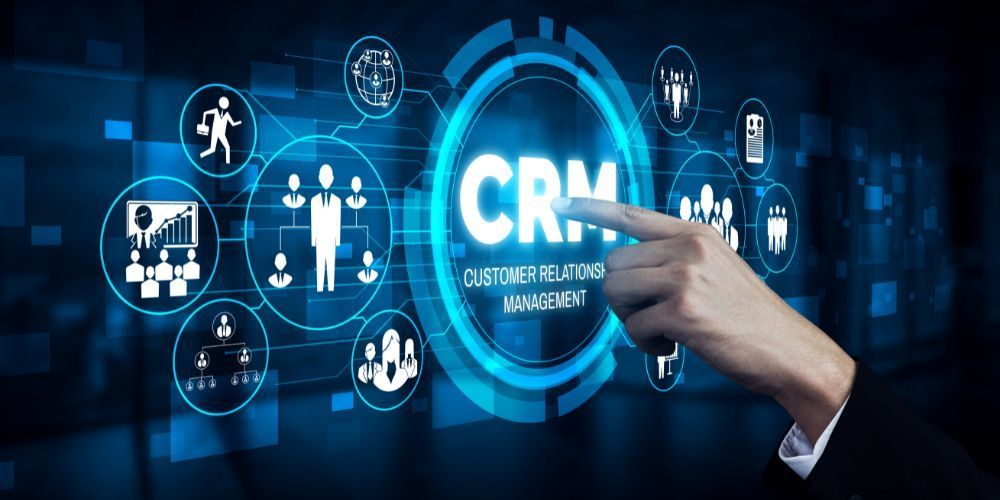Design Thinking in Enterprise Digital: A Framework for Customer-Centric MarTech Solutions
In today’s enterprise landscape, aligning MarTech (Marketing Technology) with customer needs is a persistent challenge. Many organizations invest heavily in sophisticated tools but struggle to deliver meaningful customer experiences. Traditional approaches often fail due to siloed operations, rigid project management frameworks, and a lack of real-time customer insights.
Design thinking offers a systematic, human-centered approach to innovation. By prioritizing empathy, iterative problem-solving, and cross-functional collaboration, enterprises can drive better customer outcomes and maximize the value of their MarTech investments.

Understanding Enterprise Design Thinking
Enterprise design thinking builds on core design principles but adapts them for large, complex organizations. Unlike traditional project management, which often follows linear methodologies, design thinking is iterative, allowing for continuous refinement based on real-world feedback.
Key differences include:
- Empathy-driven research rather than assumption-based decision-making. This involves engaging directly with customers through interviews, surveys, and behavioral analytics to understand their pain points and expectations.
- Rapid prototyping instead of extended development cycles. By creating quick, iterative mock-ups and testing them with end users, teams can validate concepts early and reduce development risks.
- Cross-functional collaboration rather than departmental silos. Encouraging marketing, IT, compliance, and other business units to work together ensures that innovative solutions are both practical and scalable.
Adopting design thinking in enterprise settings leads to better alignment between business objectives and customer needs, improving digital experiences and operational efficiency.
The Enterprise Design Thinking Process
Design thinking isn’t just about solving problems—it’s about redefining them. Instead of following a rigid, step-by-step process, this framework embraces flexibility, iteration, and deep customer insight to create truly impactful solutions. In enterprise environments, where bureaucracy and complexity often slow down innovation, design thinking helps teams break through barriers and build solutions that are practical, scalable, and human-centric.
Let’s break down the key phases of the enterprise design thinking process and explore how each stage contributes to developing customer-focused MarTech solutions.
1. Empathize at Scale
Understanding customer needs at an enterprise level requires structured methodologies:
- Gaining customer insights: Use AI-driven sentiment analysis, heat maps, customer journey mapping, and behavioral analytics to reveal patterns in customer behavior and expectations.
- Bringing data together: Combine first-party data from CRM systems, behavioral data from web analytics, and third-party market research to build a full picture of customer needs.
- Encouraging cross-team collaboration: Implement knowledge-sharing platforms like Confluence, Slack, and MURAL to ensure insights are accessible and actionable across teams.
2. Define: Problem Framing in Complex Organizations
Problem definition in large enterprises requires aligning diverse stakeholder perspectives while ensuring regulatory and compliance requirements are met:
- Aligning stakeholders: Identify key decision-makers across marketing, IT, compliance, and customer service. Conduct workshops to create shared goals and priorities.
- Navigating regulations: Collaborate with legal and regulatory teams to establish clear compliance checkpoints and ensure alignment with GDPR, HIPAA, and other industry standards.
- Defining success: Establish KPIs that measure business impact, customer experience improvements, and operational efficiency gains.
3. Ideate: Cross-Functional Innovation
To generate viable solutions, enterprises must foster collaboration across marketing, IT, legal, and customer experience teams:
- Generating ideas: Conduct design sprints, mind mapping, and structured brainstorming sessions to unlock creative solutions.
- Organizing and prioritizing: Use tools like Miro, Trello, and Airtable to manage ideas, assess feasibility, and determine next steps.
- Working within constraints: Ensure that solutions take security, compliance, and technical feasibility into account from the start.
4. Prototype: Rapid Testing in Enterprise Environments
Creating quick, iterative prototypes is essential to validating ideas before full-scale implementation:
- Starting small: Begin with wireframes and interactive mockups using tools like Figma or Adobe XD before developing functional prototypes.
- Gathering real feedback: Conduct usability tests, focus groups, and A/B testing to refine solutions before rolling them out.
- Reducing risk: Implement controlled pilots with a limited audience to mitigate potential risks before full-scale deployment.
5. Test: Scaling Success
Testing in an enterprise context requires robust governance frameworks:
- Ensuring structured testing: Develop protocols for user acceptance testing (UAT), performance benchmarking, and security reviews.
- Measuring success: Build dashboards that track user engagement, adoption rates, and ROI to measure the effectiveness of new solutions.
- Expanding proven solutions: Establish guidelines for adapting successful pilots across different business units, regions, and customer segments.

Enterprise Governance Framework
Effective governance ensures that design thinking initiatives remain impactful and scalable. Without a structured framework, innovation efforts can become fragmented or fail to gain traction. A strong governance structure integrates decision-making, risk management, and compliance into design thinking workflows.
- Fostering stakeholder engagement: Encourage collaboration through workshops, executive sponsorship, and clear communication of design thinking’s business impact.
- Keeping compliance in check: Balance agility with regulatory requirements by incorporating automated compliance checks and forming advisory boards to oversee risk.
- Scaling ideas seamlessly: Establish knowledge-sharing platforms and structured transition frameworks to ensure successful prototypes evolve into full-scale solutions.
- Sustaining momentum: Recognize and reward internal innovation champions while fostering a culture of continuous experimentation and improvement.
Getting Started
For enterprises new to design thinking, here are key initial steps:
- Forming a multidisciplinary team: Assemble experts from marketing, IT, compliance, and customer experience to drive design thinking initiatives.
- Laying a governance foundation: Define clear processes for decision-making, compliance integration, and risk management.
- Starting with small wins: Focus on pilot projects with high impact and low risk to demonstrate early success.
- Planning for the long term: Develop a roadmap for scaling design thinking across departments and align it with digital transformation goals.

Common Pitfalls and Solutions in Enterprise Design Thinking
Even with the best intentions, implementing design thinking in enterprise environments comes with its share of challenges. Recognizing these pitfalls early and having clear strategies to address them can significantly increase the likelihood of success.
Insufficient Executive Sponsorship
Many initiatives begin with enthusiasm but lose traction due to a lack of long-term leadership commitment.
How to address it:
- Establish regular executive check-ins to highlight progress and demonstrate value.
- Align design thinking success metrics with key business objectives to maintain relevance.
- Communicate early wins to reinforce credibility and secure ongoing support.
- Build an executive coalition across multiple business units to drive sustained adoption.
Analysis Paralysis
Enterprises often get bogged down in research, collecting vast amounts of data but struggling to translate insights into action.
How to address it:
- Set clear time constraints for each phase of the design thinking process.
- Define the minimum viable data required to move forward.
- Use rapid prototyping to validate assumptions quickly and refine ideas iteratively.
- Focus on actionable insights rather than chasing perfect information.
Siloed Implementation
When design thinking remains confined within a single department, its impact is severely limited.
How to address it:
- Form cross-functional teams from the outset, integrating marketing, IT, legal, and customer experience experts.
- Establish shared objectives that bridge departmental boundaries.
- Create a structured knowledge-sharing process to encourage collaboration and alignment.
- Develop unified success metrics that reflect enterprise-wide impact.
Compliance as an Afterthought
Viewing compliance as a late-stage checkpoint rather than an integrated part of the design process can lead to costly revisions and delays.
How to address it:
- Involve compliance teams early in ideation and prototyping.
- Build regulatory checkpoints into each stage of the design process.
- Develop a library of pre-approved design patterns that align with legal and security requirements.
- Document compliance needs as foundational design principles to guide decision-making.
Scaling Too Quickly
While a successful pilot can be exciting, rushing to expand without the necessary infrastructure and support can lead to failure.
How to address it:
- Define clear criteria for determining when a prototype is ready to scale.
- Implement a phased rollout strategy to ensure stability and adaptability.
- Establish support systems, including training and process documentation, before scaling widely.
- Capture and analyze learnings from pilot phases to refine implementation at scale.
Resistance to Iteration
Traditional enterprise cultures often struggle with the iterative nature of design thinking, preferring a "get it right the first time" approach.
How to address it:
- Educate stakeholders on the value of iteration and experimentation.
- Start with small, low-risk projects to build confidence in the approach.
- Foster an environment where learning from failures is encouraged and celebrated.
- Develop structured feedback loops that integrate insights from multiple iterations.
Poor Knowledge Management
Lessons learned from one project often fail to transfer across the organization, leading to redundant efforts and missed opportunities.
How to address it:
- Implement systematic documentation and a centralized repository for storing insights.
- Ensure that key learnings from each project are accessible to all relevant teams.
- Hold regular knowledge-sharing sessions to reinforce collaboration and cross-pollination of ideas.
- Develop case studies and best-practice guides to inform future initiatives.
Enterprise design thinking is a powerful framework for driving customer-centric MarTech innovation. By embedding empathy, iterative prototyping, and collaborative problem-solving into enterprise processes, organizations can unlock new value, enhance customer experiences, and achieve long-term business success.
Additional Resources
- Recommended tools: IBM Enterprise Design Thinking, MURAL, Adobe XD, Google Design Sprint Toolkit
- Further reading: "Change by Design" by Tim Brown, "The Design of Business" by Roger Martin
- Training resources: IDEO U’s design thinking courses, IBM’s Enterprise Design Thinking certification










